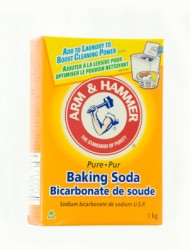Rain. Snow. Sleet. Mud. Not to mention sweat. These are only some of the elements braved by marching uniforms throughout the season.
Cleaning Band Uniforms
Band uniforms are very expensive and generally require professional cleaning. They are usually wool or a wool/synthetic blend, and are susceptible to damage from perspiration and rubbing under the armpits during marching. Wearing a t-shirt underneath helps absorb some of the perspiration. Other common band uniform stains are ink, food, sugar drinks, grass, and mud—which shouldn’t be terribly surprising considering all the pep rallies and football games band members must attend.
The uniforms should be cleaned as soon as possible after each use (usually between games) in order to prevent any stains from setting and to avoid attracting insects, which especially prey on wool fibers.
In between cleanings, on-going maintenance is required:
- We’ve heard of success using handheld elictric “de-fuzzers” to take off some of the little lint balls that develop and to brighten up fabric a little.
- If the uniforms get wet from rain, it’s best to lay them out to dry overnight before hanging.
- Mud on the bottoms of pants can be wiped down with damp cloths.
- Try to use big, heavy-duty wooden hangers for uniforms so that pants do not get wrinkled. If they become wrinkled, they can be pressed.
Band uniform manufacturers share their uniform cleaning secrets.
♦ “Regardless of the type of construction used in your uniforms, having them dry cleaned will add years of use to them. If you must wash and tumble dry them, we recommend removing them from the dryer before they become completely dry. Also, if uniforms should get damp during a performance, they should be hung on a hanger or seat back to dry. Never put a damp uniform in a garment bag. —Keith Hall, Founder and President, The Band Hall – www.thebandhall.com
♦ “The jackets are made to wash, and all the components have been tested. We built the test jackets and washed them 100 times. Don’t let students lean up against a brick wall. It will break down any uniform fabric. Band uniforms are expected to last anywhere from five to 10 years, so little things like that can make a big difference in how the uniforms can hold up.” —J. Pearison, Senior Vice President, Band Shoppe – www.bandshoppe.com
♦ “The dry cleaner should not overload his tumbler. If it is overloaded, it will sti fle the flow of chemicals into the makeup tank. Perspiration is very toxic, and it can release excess dye. It just depends on how the dry cleaner takes care of extracting that excess dye out and then sealing the dye.
♦ The uniform should not be stored in plastic or nylon bags, zipped up in a room with no ventilation. The uniforms should be placed into a room with proper ventilation and no bags, so that the garments can air out. Mildew can set into the bers of the uniforms; you won’t be able to see it, and dry cleaning cannot take it out.” —Kenny Fruhauf, President, Fruhauf, www.fruhauf.com
♦ “What we really want our customers to know is that the best policy with cleaning is to test a few garments rst to avoid any possible issues. Make sure this is done at a reputable dry cleaning establishment. At www.stanbury. com, we have extensive cleaning instructions including a video. The biggest issue is spot cleaning and color migration; it’s particularly an issue with red, maroon and black.” —Gary F. Roberts, President, Stanbury, www.stanbury.com
No matter what, follow the care label and remember that we’re here to help with difficult stains or any items that need professional attention.
– S.O.




